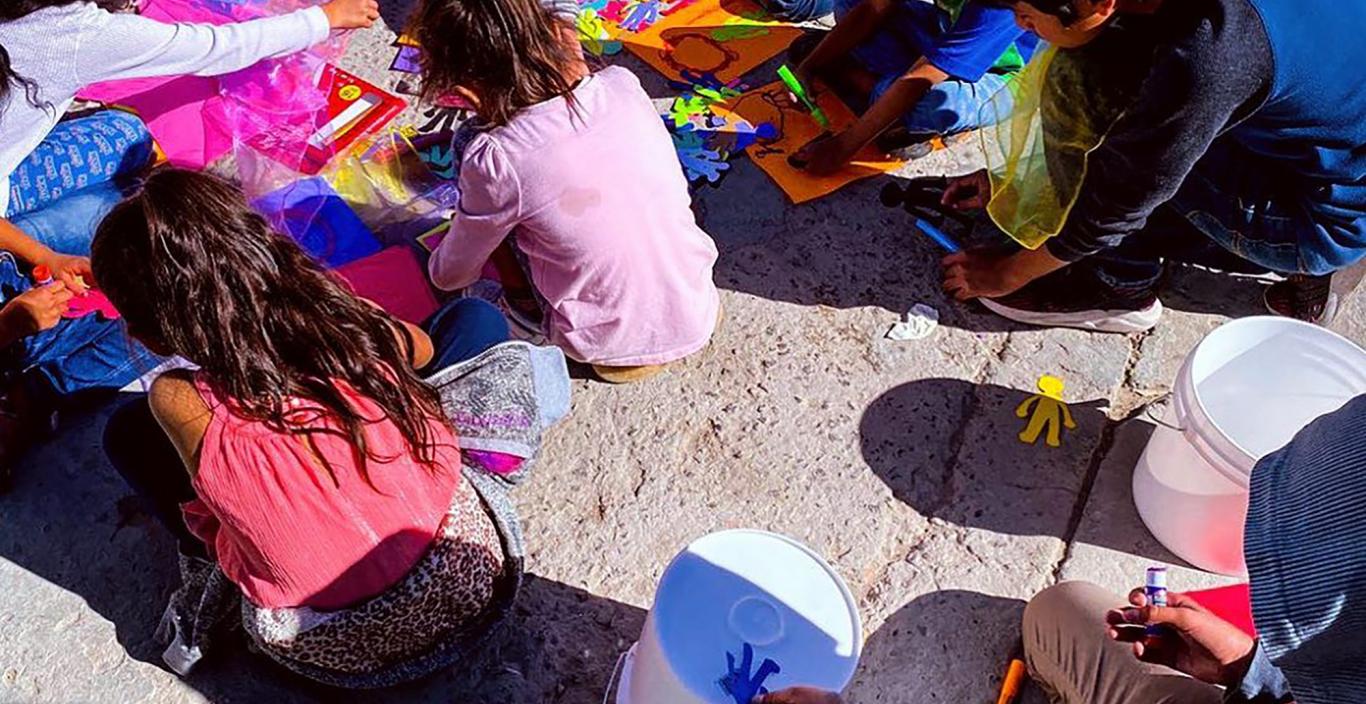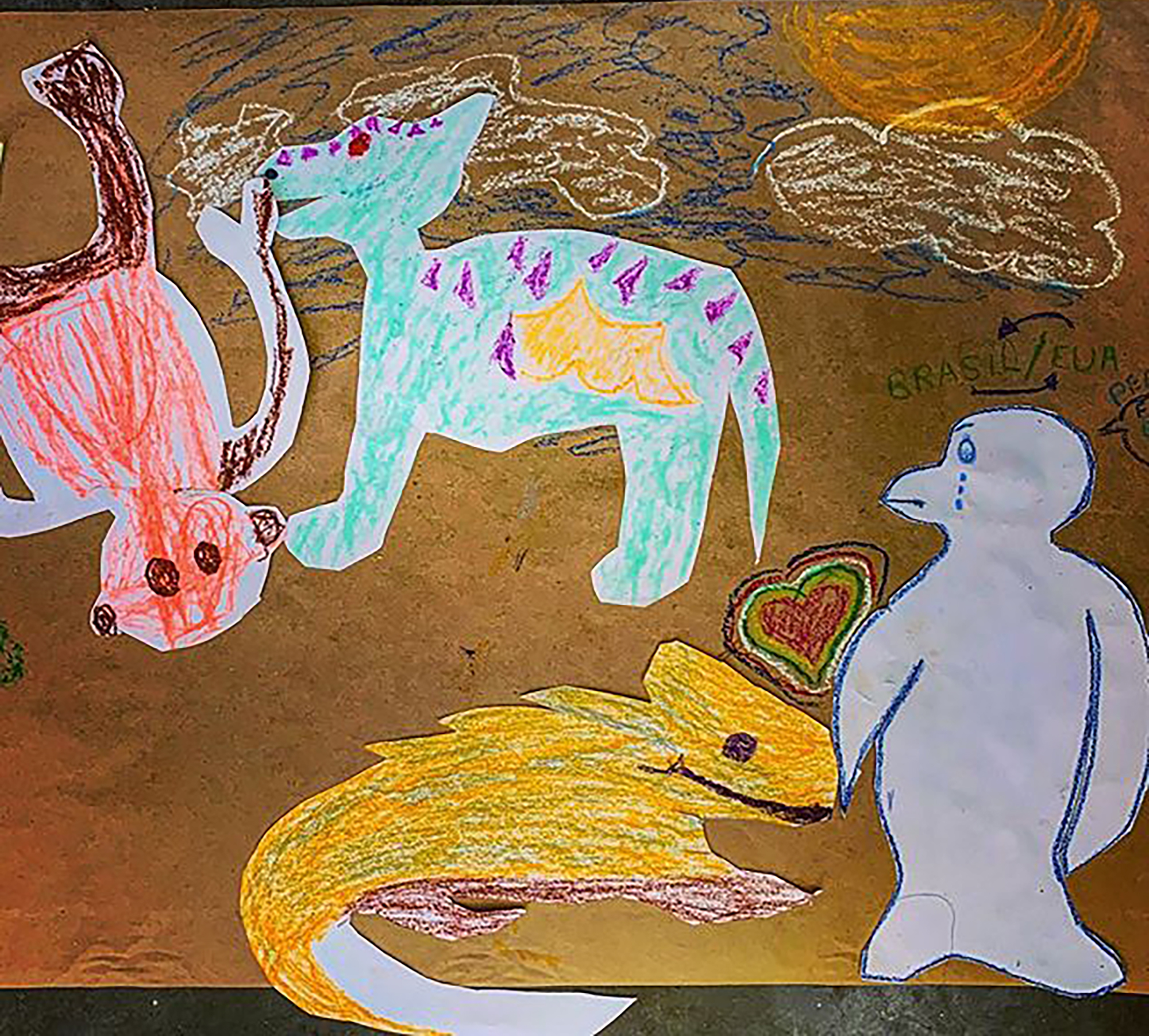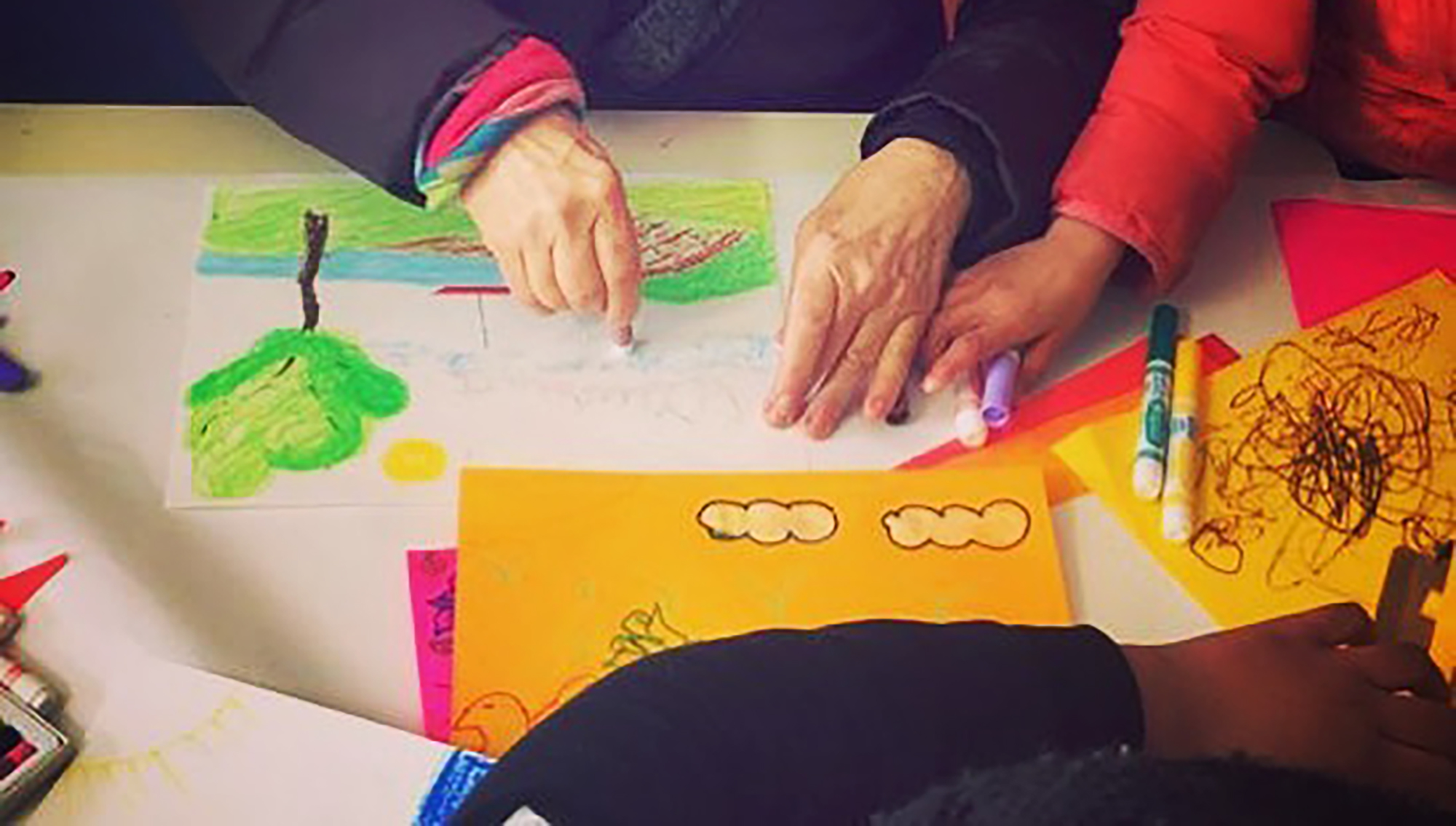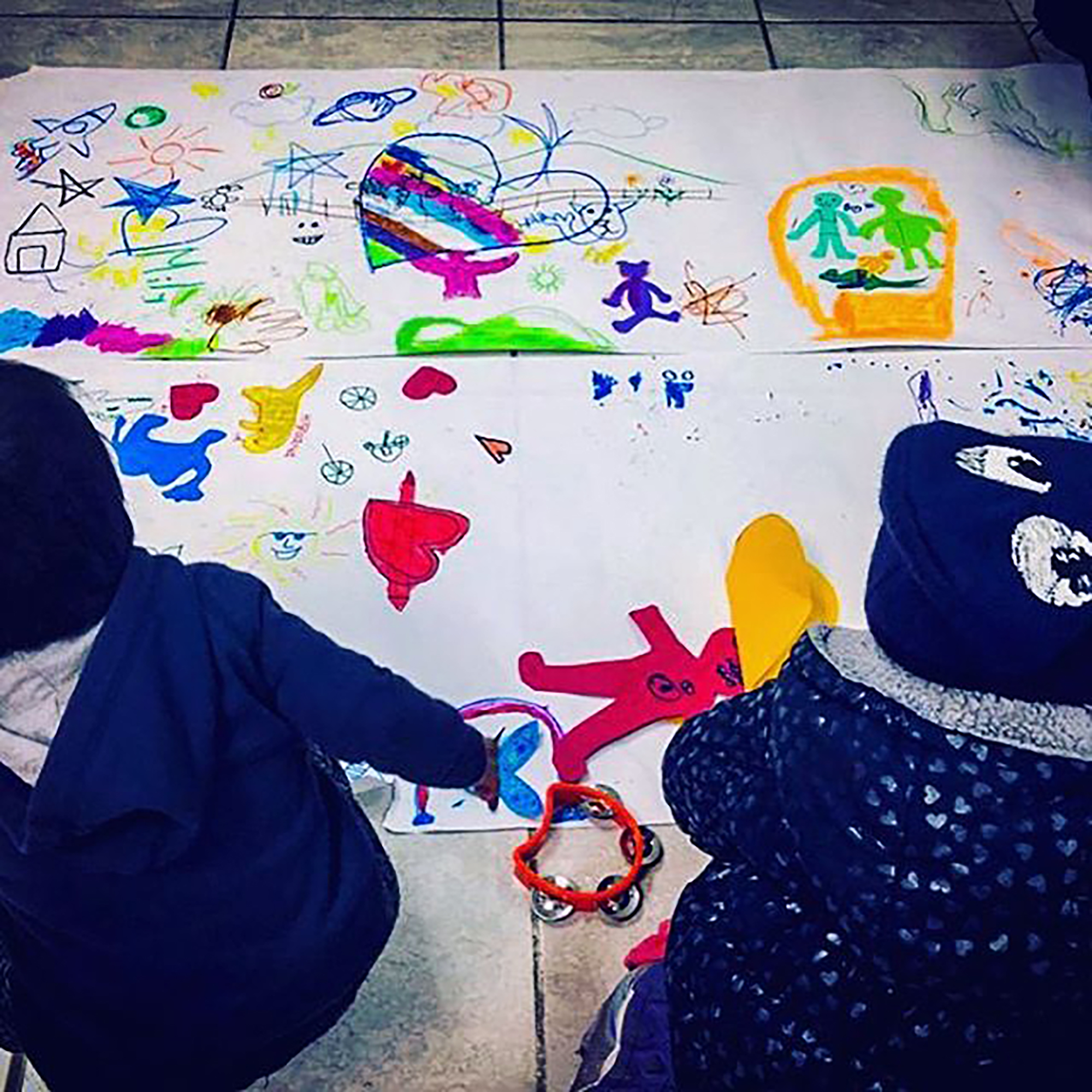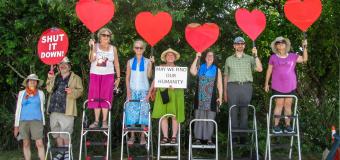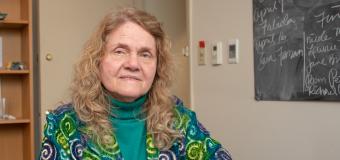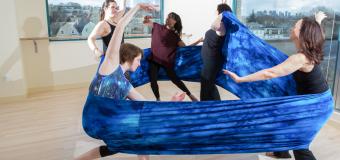Lesley faculty, alumni and students have spent more than a year bringing the transformative power of trauma-informed arts interventions to immigrants and asylum-seekers living in shelters on the U.S.-Mexico border.
For Lesley expressive therapies professors Dr. Mitchell Kossak and Dr. Kelvin Ramirez, the separation of migrant families and placement in detention centers and shelters in the border cities of El Paso, Texas, and Ciudad Juárez, Mexico, necessitated action.
“Mitchell and I were talking about doing this work and how much it was weighing on us,” recalls Ramirez, who is also a Lesley alumus. “We were stressed out about what was happening and wanted to do something.”
In July of 2019, Kossak connected with colleague and friend Greta Bro to discuss their distress over the humanitarian crisis at the border. Kossak had tried to access detention centers and shelters in Florida through Graduate School of Arts and Social Sciences PhD student Lidice Cohen, who works with incarcerated youth there, but the Trump administration’s restrictive policies made that difficult.
Simultaneously, Ramirez, through contacts at the University of Texas at El Paso, connected with community organizer Lucero De Alva and Enrique Valenzuela, director of Centro de Atención a Migrantes, a migrant transition agency operated by the Chihuahua, Mexico, state government. Ramirez began traveling to Juárez in August 2019 to assess the community’s needs and begin planning for future volunteer trips.
Ramirez and Kossak formulated a plan to help. Hearing of this, Lesley counseling and psychology professor Dr. Joe Mageary joined the team.
Lesley takes action
Asylum-seekers often wait months in unsanitary, crowded detention centers for an immigration hearing. Many are warehoused in cells without adequate food, water, family connection, finances, educational opportunities and legal representation. Many others, under Trump’s Migrant Protection Protocol, were returned to the countries from which they fled, back to profound poverty and, in many cases, human-rights abuses.
Kossak and Bro’s conversations provided the initial spark for the organization Voces Arts and Healing, a volunteer group of 14 expressive arts therapists, psychotherapists and educators, many of them from Lesley.
“We came up with the name ‘Voces’ because it means voices, and we wanted to amplify the voices of the people who don’t have a voice and right now,” recalls Kossak. “Those are the migrants and asylum-seekers. We wanted to amplify their voices through their stories and artwork.”
Ramirez explains that the organization’s work spans three different tiers:
- Direct care in shelters, engaging in therapeutic activities to support their mental health
- Training a network of staff to better support migrants’ mental health
- Developing methods for Juárez-based educators and caregivers to sustainably address the mental-health needs of asylum seekers.
Many asylum seekers are survivors of intense trauma, often experiencing acts of violence in their countries of origin. Added to this, the constant stress of the immigration process can re-traumatize asylum-seekers. Ramirez says clinicians must be sensitive to these multiple layers of trauma and find non-intrusive approaches.
“If we tried to work with immigrants about their trauma, it would just be more difficult for them and increase their stress levels,” he says. “So, we are working through the arts to allow them to express themselves in different ways.”
Kossak adds, “A lot of the current research talks about the need to address the embedded ‘fight, flight or freeze’ mechanism that happens in trauma that gets imbedded in the nervous system, and that one of the best ways to work with that is through the arts.”
Healing trauma through the arts
Rather than focusing on the asylum seekers’ experiences and stories, Voces gets folks moving and having fun in order to reactivate those expressive functions inside them that have shut down.
“Through movement, drumming, art-making and singing, we have had some pretty special and important experiences in the shelters” says Kossak.
Kossak describes simple exercises with asylum-seekers, like finding a heartbeat and discussing what dreams are in their hearts, as a prompt to create art and sing songs. These simple exercises help detainees express themselves and support resilience.
In mid-March 2020, Ramirez led a travel course of expressive therapies students to work in the shelters and detention centers of Juárez. He hoped to help the students understand the complexities of working with marginalized communities while challenging their perspectives through an experience in activism and advocacy.
“Some of their training that is grounded in Eurocentric perspectives and some of the theories they have learned are important but need to be suspended with some populations,” Ramirez says. “There are other ways of working that may not be as clinical as in some of the textbooks.”
An eye-opening journey
“This experience was challenging because asylum seekers stuck in Mexico have such a unique situation of trauma. Therapeutic interventions with asylum seekers cannot focus on overcoming a traumatic event because they are still living their traumatic event,” says art therapy student Madeline Lutke.
“Many of the individuals in shelters in Juárez have accumulated trauma throughout their journey to seek refuge in the United States,” Lutke continues. “This devastating experience of continuous trauma often begins in an asylum seeker’s home country. Additionally, the actual journey from one’s home country to the Mexican border cities like Juárez also exposes them to further trauma, such as violence, exploitation and kidnapping.”
For many students, the trip was an eye-opening insight to the realities of asylum and immigration policies.
“Immigration is just something that is a hot topic kind of debate issue, but when it really comes down to it, no one really knows what laws are in place and being constantly shifted, what actual traffic, transition and policies happen legitimately at the border,” says art therapy student Elanna Abreu. “It’s something that I think needs to be implemented more in education, the fact that this country is built off of immigration, but it is one of the topics we severely lack understanding of.”
Lutke adds, “Upon arriving to Juárez, I was frustrated with my lack of awareness for what is going on at the border. I was ashamed at how little I previously knew of the situation and the unjust immigration policies of the United States. I had to travel all the way to the Mexican border in order to realize exactly what is happening.”
Visiting Juárez made the situation, which she’d only heard about in “snippets” on the news, real.
“Once I saw the conditions asylum seekers are living in and learned about what they are going through, I also became more aware of how dehumanizing and inhumane the whole immigration system is,” Lutke says.
Caring for caregivers
The work taking place with asylum-seekers can often be emotional. For members of Voces, self-care is an important extension of the work.
“Because there is vicarious trauma, we spend hours afterwards processing,” Kossak says, “doing artwork ourselves and talking about the work because it is very emotional, difficult and heartbreaking.”
Voces maintains a supportive community by lodging together when in Juárez and remaining connected at home between trips through video chats.
Traveling during March 2020, this course coincided with the international outbreak and response to the COVID-19 pandemic. Students were challenged to tend to their own fears as a pandemic unfolded, while remaining present to provide compassionate care.
Once they arrived home safely, quarantines and lockdowns allowed time for students to process and reflect on their experiences in Juárez. Meanwhile, members of Voces quickly worked to find ways to continue their work without the ability to travel.
Continuing the work during COVID
Without the ability to travel back to the border, members of Voces formed a partnership with the Desarrollo Integral de la Familia, a public institution in Mexico that focuses on the welfare of Mexican families, to offer virtual activities to those in the shelters, along with trainings for the institution’s employees.
Many members of Voces are also providing pro-bono telehealth services to those running non-profits and working in detention centers or shelters. Voces has also continued ongoing fundraising to provide food for families to more than 400 asylum-seeking families both in and outside the shelter system to date.
“For me it’s been really important to be on the ground, making connections, being in the shelters and running groups. It’s just amazing and it’s a lot of fun,” Ramirez says. “So, not having that way to connect directly with asylum seekers is a little tough.”
Yet, he says Voces is working with shelters and non-government organizations (NGOs), such as Seguimos Adelante, to set up technology for remote therapeutic services and asynchronous activities, though getting this technology up and running takes time and funding.
Ramirez says there are many ways that faculty, staff, students and Lesley University can support the work virtually.
“Individually, we can financially support NGOs that do this work on the ground, we can increase awareness and get others involved to donate their resources and expertise,” he says. “As educators or clinicians, we can develop activities that support the psychosocial needs of this vulnerable population. And as an institution, Lesley can open up pathways, especially through virtual trainings and/or classes to support the professional development of community leaders doing this work.”
Kossak agrees, adding there’s always a need for individuals and institutions with expertise and training to get involved directly. Quoting Elie Wiesel, Kossak says, “To stay silent is the greatest sin of all.”
